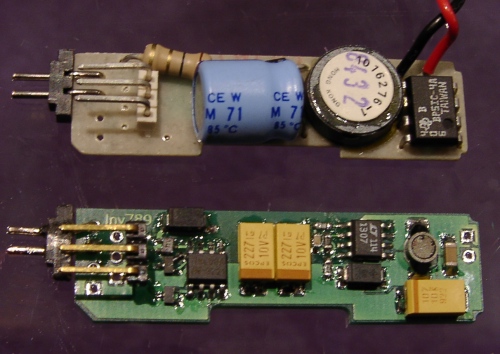|
 |
What happens to a Battery Pack over time?Accumulator cells only stand a certain number of charge/discharge cycles. In addition, they become weak after some years. As the calculators we are talking about were manufactured in the 1970s and 1980s, nearly all of their accumulators have become defective at least once since then. If the user noticed it, he bought a new pack. If not, the accumulators leaked and the corrosive electrolyte (potassium hydroxide) spilled over the electronic circuit beneath the cells and damaged it. This is why collectors often find defective Battery Packs inside the calculators they acquire. By the way, Texas Instruments called their BPs “leak proof”. That’s right, the electrolyte leaking from the cells does not spill outside the pack, but it eats up everything inside! Replacing cellsMost of the original cells are dead. Mechanically, the cells are AA size and have a rated capacity of 450 to 500 mAh. So, they can easily be replaced. Today's cells have twice to four times the capacity of the original cells, but their size is the same. When replacing cells, use nickel hydride types with solder tabs. Flat top industrial types are best suited as consumer cells may be a little longer and do not exactly fit into the given space. Do not solder directly on the cells! Disassembly instructions are given in the Datamath Museum. Replacing the voltage converterDue to corrosion caused by cell leakage, many voltage converters do not work any more even if the cells are replaced. Either they do not work at all, become hot, or draw excessive idle current from the new cells, discharging them within a few days even if the calculator is never operated. Even if they seem to provide power to the calculator, charging does not always work. The integrated circuit on the converter board has been discontinued long time ago. So, there are no replacement chips available. After this had happened to me several times, I decided to design a replacement converter using today's state-of-the-art technology. This converter fits the BP-7, BP-8, and BP-9 packs and has the same footprint as the original circuit. Shown below is a picture of the original and the new circuit. I have to admit that the new circuit is more complicated than the original one, but it has improved characteristics. If you want to repair your own Battery Packs, you may order the replacement circuit on the Order page. |






